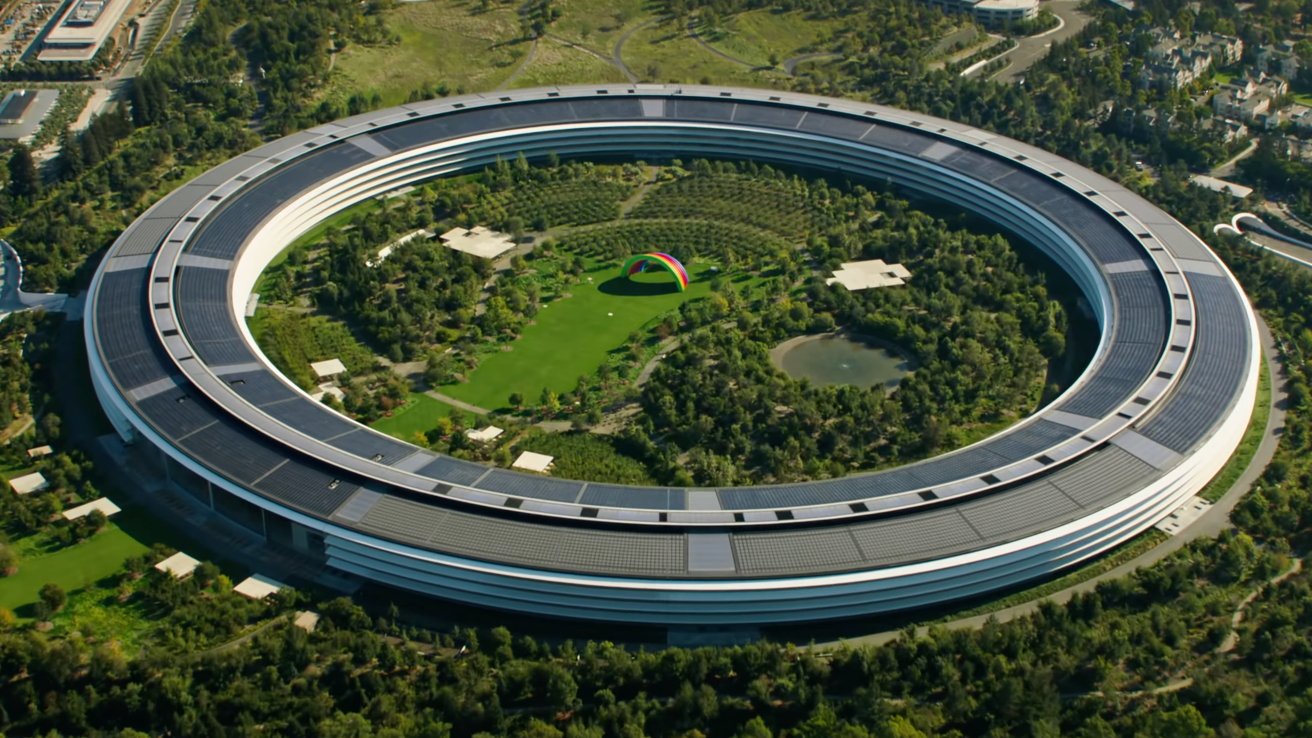2024 was a wild year for technology, and 2025 is poised to be even crazier. As we move into the new year, the fate of TikTok hangs in the balance, the electronics industry is bracing for the possibility of tariffs, the chip wars rage on, internet freedom is in jeopardy, and for better or worse, generative AI continues to march forward.
In an effort to anticipate what might happen in the months ahead, we asked our team of analysts, reporters, and writers to weigh in on what they expect to see in 2025. Here’s what they predict:
A Global Data Security Showdown
Data security is already a hot topic in the wake of daily data breaches, but I think that 2025 is the year when governments will finally start to get involved. As Chelsea Manning noted during our interview this year, more countries around the world may impose restrictions on how companies can sell, store, and transmit customer data.
In addition to that insight, I received a lot of good IoT security and online privacy advice from experts this year. With those tips in mind, I hope that 2025 will be the year when lots of people stop posting the minutiae of their lives on public social media profiles and start communicating via federated social platforms such as Mastodon or encrypted messaging apps. — Kim Key, Senior Analyst, Security
AMD and Nvidia Will Make Gains, TikTok Will Be Saved, and More Chinese Tech Will Be Banned
Nvidia and AMD will continue to see success in 2025 while Intel will keep struggling to play catch-up. But all the somewhat overblown hype around AI will start to cool so that growth won’t be explosive. AMD’s CEO recently revealed that another X3D chip is being developed, so that’s great news for gamers.
I also predict Donald Trump will block the TikTok ban in a bizarre (but not unexpected) twist, and tech billionaire CEOs like Mark Zuckerberg, Jeff Bezos, and Elon Musk will continue to suck up to him in exchange for tax breaks and little to no regulation.
We’ll see more US import bans on Chinese tech like drones, and it’s likely more countries and companies will be testing and implementing more blocks on IP addresses tied to VPNs, too. — Kate Irwin, News Reporter
Generative AI Will Finally Make Alexa and Google Assistant Smart
With Apple announcing that Siri will benefit from generative AI to beef up its smarts considerably—allowing true conversational continued context—Alexa and Google Assistant should be worried.
But both companies, Google with its Gemini and Amazon already implementing genAI in AWS, can be expected to up their AI games in 2025. And it’s not a moment too soon.
Anyone who’s interacted with a recent version of ChatGPT, Google Gemini, or Microsoft Copilot knows that the difference in the experience is night and day compared with legacy AIs like Alexa. Way too often, when you ask Alexa or Google Assistant something, you get, “I can’t help you with that.” Or “I don’t know the answer, but here are some web links.” That’s never happened to me with ChatGPT, Copilot, or Gemini.
One downside is that you may have to pay for the extra capability, as has been reported for the smarter Alexa. Another is that generative AI is notoriously bad for the environment. — Michael Muchmore, Lead Software Analyst
A Cascade of Conscious Unplugging
Whether it’s because of increasing prices, overstepping governments, or obnoxious billionaires, I think there’s going to be an increase in folks unplugging from social media and distancing themselves from tech in general. The pandemic caused many of us to be tech obsessed and extremely online, but if/when prices increase because of tariffs, I don’t think there’s going to be a lot of incentive to keep up with the latest and greatest tech gear.
The same goes for AI. If AI doesn’t find a problem to solve, I can see it being shelved alongside cryptocurrency, NFTs, and Web3 as some futuristic fever dream with no real applications. — Zackery Cuevas, Analyst
More Publishers Will Crack Down on Retro Handhelds
The legality of retro gaming handhelds has been suspect for a while now. Some are “legitimate” in that they have commercial software ecosystems and use video game cards, cartridges, or official downloads to function. Others are open, emulation-based devices.
Officially, in order to load this second category of devices with games to play in emulators, you’d need to own the physical copies of these games yourself. Recently, retro handheld devices have flooded Amazon and Alibaba, preloaded with dozens and sometimes hundreds of games.
Nintendo has cracked down on this form of copyright infringement in the past, and it’s only a matter of time before other publishers do as well. — Francisco Lahoz, Junior Analyst
Section 230 Will Be Gutted
Section 230 of the Communications Decency Act has stood as a pillar of internet freedom since 1996, but there’s a good chance it won’t survive a second Trump presidency.
Donald Trump took aim at the law during his first term and failed to kill it, but things are different this time. When he takes office in January, he’ll have a fully Republican congress behind him and a roadmap for removing the law laid out in front of him by the Heritage Foundation’s Project 2025.
With these differences in mind, it seems practically inevitable that Trump will move to gut Section 230 and fundamentally reshape the web as we know it. — Drew Prindle, Executive Editor, Features
Point-and-Shoot Cameras Will Make a Comeback
I thought smartphones had hammered some nails in the coffin holding the remains of the once-thriving compact camera market, but I’m ready to reassess that opinion. I expect pocketable point-and-shoots to make a comeback in 2025.
Younger creators are looking for the “retro” digital look and discovering that the LED flash on smartphones is no substitute for the creative effects you can get with a proper camera flash, and hobbyist photographers still want options that tickle their creativity and aren’t as cumbersome as a mirrorless camera.
The few quality compacts that are still on the market have been on backorder status for a couple years now, so it’s time for Canon, Nikon, Sony, and the other usual suspects to step up with refreshed models. We’ve already seen the first rumblings of this trend, Panasonic just trotted out a new $500 compact zoom, the ZS99, and others would be wise to follow suit. — Jim Fisher, Lead Analyst, Cameras
The Next Computer Graphics Revolution
The graphics card market is experiencing a chaotic revolution unlike any we have seen in decades.
Intel re-entered the market back in 2022, giving us a third GPU option for the first time since the early aughts, and its late-2024 Intel Arc B580 is a new, powerful force in a budget market that has been starved for new options for years. At the same time, rumors suggest that AMD will double down on the midrange market. Meanwhile, Nvidia, spurred on by its wild successes in AI silicon, is laser-focused on the high-end and expected to launch its highly anticipated GeForce RTX 50 series for desktops and laptops in early 2025.
All three companies are expected to have entire new families of graphics cards for 2025, with cards likely to be released every few months. Though the three appear focused on different market segments, you will unquestionably see overlap.
It’s hard to predict who will come out on top in each stratum, but one thing’s for certain: 2025 will be an exciting year to be a PC gamer. — Michael Sexton, Analyst, Hardware
The Battles of the Three-Way Mobile Chip War Will Get Heated
Between a dazzling array of hyped features and an all-out silicon battle, buying a laptop will get more complicated than ever in 2025.
With Qualcomm in the ring now since mid-2024, three major players compete for market share in mobile computing today, aiming to convince shoppers that they’re the best fit for your next laptop. This new paradigm is here to stay for 2025, and Qualcomm, the newest face on the scene, will continue to target the most mobile class of laptops (while Intel, though still vital in mobile chips, has its work cut out). The next generation of laptop chips will continue to push the envelope on efficiency and battery life, raise the bar on raw performance, and (especially) flaunt lofty AI claims.
With manufacturers often selling laptops with every chip as an option, you’ll need to read closer than ever to know what exactly you’re buying—but it will be better for consumers as competition drives more aggressive pricing and lower points of entry to the latest products. — Matthew Buzzi, Lead Analyst, Hardware
Canon Won’t Change Its Tune on Full-Frame Third Party Lenses
Canon opened up its RF mirrorless mount to third-party lens makers this year, allowing them to make lenses with autofocus and electronic communication for the first time, but so far has restricted licensing to lenses made for the smaller APS-C sensor size used in entry-grade options like the EOS R50 and EOS R10.
Recommended by Our Editors
Creators who use full-frame Canon R cameras are left clamoring for more lens options, and the major third parties (Sigma and Tamron) already have full catalogs of full-frame glass that would bolster Canon’s own line of lenses.
But I don’t think Canon will let others play in the full-frame space in 2025, though this is one instance where I’d welcome being flat wrong. I’d love to pair a lens like the 3-pound Sigma 500mm F5.6 DG DN OS Sports with an EOS R5 Mark II, but I won’t hold my breath waiting for fear of asphyxiation. — Jim Fisher, Lead Analyst, Cameras
AMD Will Soar Amid Intel’s Troubles in Desktop Silicon
No matter how you slice it, Intel is in a state of turmoil. Its “Raptor Lake” and “Raptor Lake Refresh” processors had a major crashing issue that was down to a debilitating voltage bug, and its manufacturing technology currently lags the competition. (Intel has even felt the need to tap TSMC to fabricate its latest chips.) Those new processors, known by the family name “Arrow Lake,” showed strong CPU performance but surprisingly poor gaming speeds, and this compounding of Intel’s fumbles has pushed many gamers to switch to AMD.
The “Red Team’s” new Ryzen 9000-series processors themselves weren’t particularly revolutionary, but they have exhibited noticeable power and efficiency gains, combined with a modest uptick in performance. This has ceded some of the floor to AMD’s Ryzen 9000 series as a step forward, while Intel’s Arrow Lake CPUs are more of a mixed bag in the early going.
It’s difficult to predict what will happen in 2025, but it’s clear that Intel must respond to these issues–and soon!–or risk losing even more market share to AMD. — Michael Sexton, Analyst, Hardware
You’ll Be Able to Buy a $50 Wi-Fi 7 Router
When the first Wi-Fi 7 routers became available a year ago, only one phone supported the cutting-edge wireless networking standard. But the allure of faster and more reliable Wi-Fi is irresistible.
Today, all major phone and laptop vendors have Wi-Fi 7-compatible models available. Even gaming consoles are getting in on the 7 action, thanks to the PS5 Pro.
People are naturally looking for wireless routers that let them use the full Wi-Fi capabilities of their devices, but they don’t want to spend the $500 and up that used to mark the entry-level category for Wi-Fi 7 routers and mesh systems.
So, I predict that 2025 is going to be the year of the $50 Wi-Fi 7 router. We’ve already seen a $100 Wi-Fi 7 router launch, and it’s no great leap to suspect we’ll see more models with $100 or lower MSRPs that are occasionally discounted to $50—what we consider the bargain basement of router prices. — Tom Brant, Deputy Managing Editor
AI and Quantum Computing Will Do Their Part for Security, Companies Will Merge
As we move into 2025, the weakest link in security and privacy will continue to be the user. Employees at major companies will yet again fail to detect spear phishing attacks, thereby causing data breaches affecting millions or even billions. Individuals will fall for scams that are ever more clever thanks to generative AI.
Speaking of AI, we can all see that generative AI is getting better and slicker at generating convincing documents and images, to the point where you don’t know what’s real. More security companies will make vague promises that they use AI to protect you. Surprisingly, these will prove to be true–AI is very good at the pattern-matching skills needed to detect malware that’s trying to hide.
But, surprise! Malware coders can use AI to generate malicious programs that escape detection. The end result of this cat-and-mouse game is likely a stalemate. AI is not going to make antivirus protection perfect or unnecessary.
We’ve been hearing for years that quantum computing will negate any encryption system that works only because cracking it would take a ridiculous amount of time. And that describes all the encryption techniques that hold the internet together. Government agencies, VPN companies, and others are working on quantum-proof encryption. It’s a good effort, and surely worthwhile. But it will still be years before malefactors can actually use quantum techniques to break encryption.
One more thing: Security companies and security products will continue to merge and lose distinction. Gen Digital now owns Avast, AVG, Avira, Norton, and even the defunct BullGuard, along with many lesser names. I can’t predict the next big merger, but I won’t be surprised when it comes. At the same time, it’s getting harder to categorize programs. Look at Norton VPN Ultimate, or Surfshark One. Is it a security suite with VPN, or a VPN with antivirus security? — Neil J. Rubenking, Lead Analyst, Security
Get Our Best Stories!
This newsletter may contain advertising, deals, or affiliate links.
By clicking the button, you confirm you are 16+ and agree to our
Terms of Use and
Privacy Policy.
You may unsubscribe from the newsletters at any time.

About PCMag Staff










